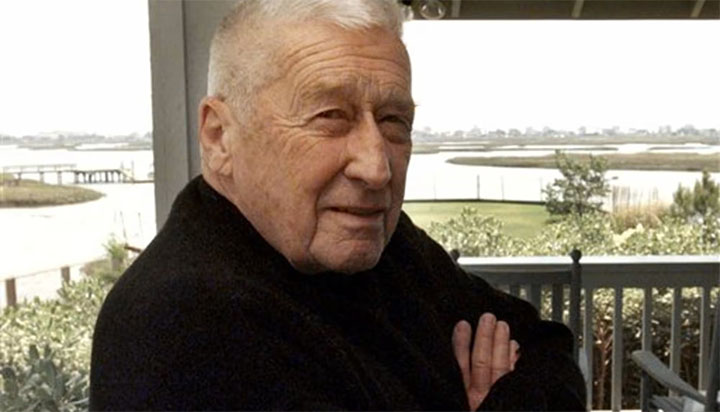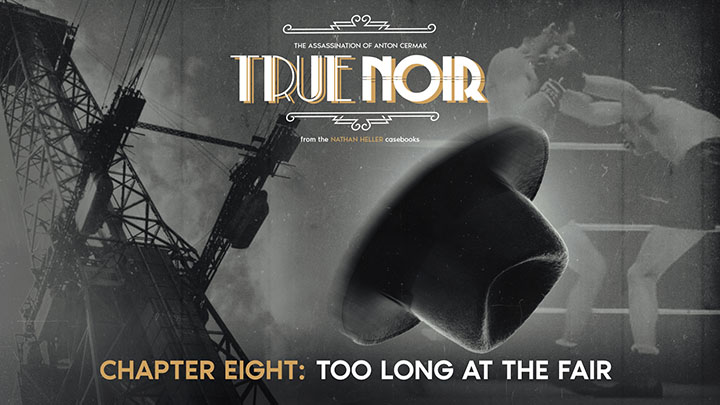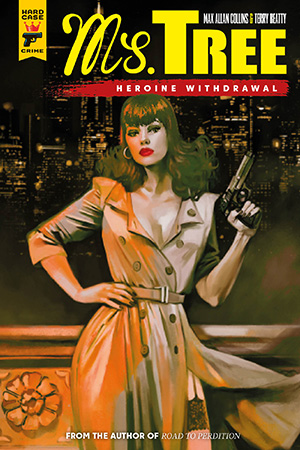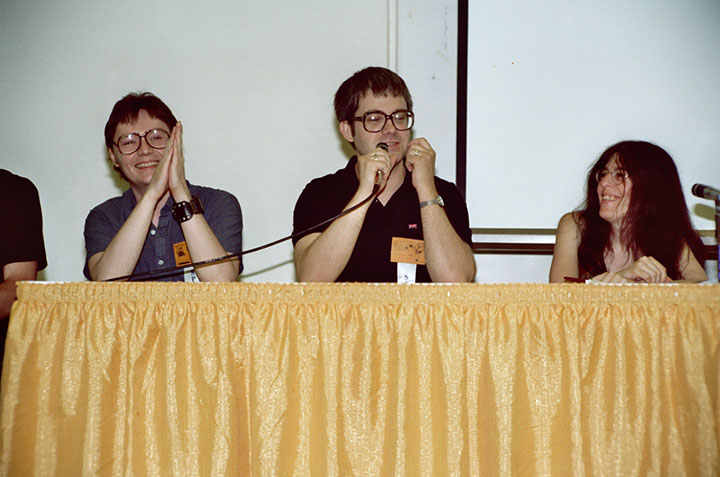My last several Update/blogs have been to promote this and that of mine. Plus, I was deep in the writing of a screenplay and couldn’t come up for much air. You deserve better.
On my plate this week, among other things, is doing a commentary track with Heath Holland of Cereal at Midnight for the 1932 western, Law and Order, from a W.R. Burnett novel about Wyatt Earp. I’m also doing a podcast with my old buddy Matthew Clemens, and have several business calls on Zoom.
So there will likely be some follow-up on some or all of that here next week. What now, then? Well, the questions I continue to be asked most often are (a) what have you read lately, and (b) what have you seen?
As for what I’ve read, the two most current books are:

Barnaby Volume 5 ( ) from Fantagraphics, the final volume of the complete daily strips of this classic, too little-known comic strip, which (with Dick Tracy, Li’l Abner and Terry and The Pirates) is among my top favorites. Written and drawn (sometimes with Jack Morley’s help on art) by the great children’s book author, Crockett Johnson (Harold and the Purple Crayon), Barnaby is a deceptively simple strip of the ‘40s and early ‘50s that details the whimsical adventures of a five-year-old boy (Barnaby) and his Fairy Godfather (Mr. O’Malley). O’Malley is just as short as the child Barnaby and is a pleasantly pompous little pixie who looks like a middle-aged man with a fedora and, of course, pink wings.
) from Fantagraphics, the final volume of the complete daily strips of this classic, too little-known comic strip, which (with Dick Tracy, Li’l Abner and Terry and The Pirates) is among my top favorites. Written and drawn (sometimes with Jack Morley’s help on art) by the great children’s book author, Crockett Johnson (Harold and the Purple Crayon), Barnaby is a deceptively simple strip of the ‘40s and early ‘50s that details the whimsical adventures of a five-year-old boy (Barnaby) and his Fairy Godfather (Mr. O’Malley). O’Malley is just as short as the child Barnaby and is a pleasantly pompous little pixie who looks like a middle-aged man with a fedora and, of course, pink wings.
Barbaby’s parents are distressed by their little boy’s insistence that his Fairy Godfather is real. A lot of the gentle humor comes from the reality of Barnaby’s opinion on this matter being true. Mr. O’Malley frequently almost meets one or both parents, and that becomes the chief running gag of the strip. The other is Mr. O’Malley’s cheerful incompetence, his magic wand (a cigar) frequently accomplishing nothing at all.
O’Malley’s friends and associates are fellow pixies and supernatural types, like Gus the Ghost, who wears glasses and is easily spooked; Atlas the Mental Giant (also no taller than Barnaby), McSnoyd the Invisible Leprechaun (who speaks in a Brooklyn accent); Barnbaby’s talking dog Gorgon (who never speaks around Barnaby’s parents); and many more. Johnson’s “clear line cartooning” is the most deceptively simple aspect of all: oddly elegant, beautifully understated, and unmistakably Crockett.
In this final volume, Barnaby turns six and must say farewell to Mr. O’Malley. It’s a sad moment, bittersweet but just another day in the life of a Fairy Godfather, who is definitely not imaginary and as real as anybody in the comic strip canon.
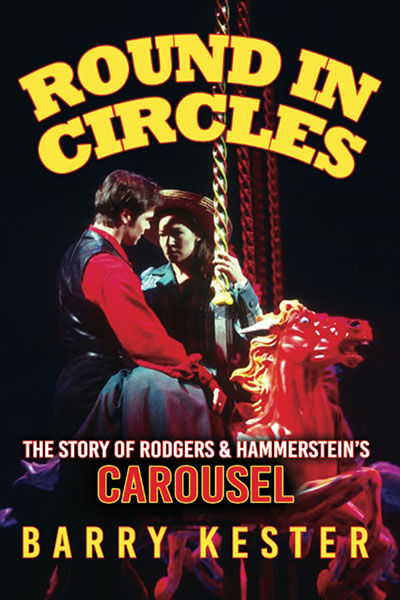
Round in Circles: The Story of Rodgers & Hammerstein’s Carousel ( ) by Barry Kester takes an in-depth look at one of the greatest musicals ever written, and in my view (and that of many) the finest work by Rodgers (music) and Hammerstein (book and lyrics). From the 1901 play Liliom by Ferenc Molnar, fairly faithful but with a much less dark conclusion, Carousel focuses on the sudden romance between a carnival barker and a young mill worker lass; the latter’s friends in a New England fishing community provide a backdrop and counterpoint.
) by Barry Kester takes an in-depth look at one of the greatest musicals ever written, and in my view (and that of many) the finest work by Rodgers (music) and Hammerstein (book and lyrics). From the 1901 play Liliom by Ferenc Molnar, fairly faithful but with a much less dark conclusion, Carousel focuses on the sudden romance between a carnival barker and a young mill worker lass; the latter’s friends in a New England fishing community provide a backdrop and counterpoint.
It’s most overtly noir musical I can think of, with its emphasis on crime and its tortured central lovers. Modern audiences – or at least those mounting this great work of art for those audiences – have problems with the thematic content of the play. Billy Bigelow is a roustabout roughneck who has, at least on one occasion, “hit” (probably slapped) his gentle wife, who puts up with her husband’s jobless state and foul temper. In modern terms, this is viewed as an abusive relationship, and Round in Circles explores that subject thoroughly and well. Author Kester makes the point that the year the play was produced (1945) was toward the end of the Second World War, when men were starting to return from combat in a traumatized state and sometimes had difficulty into getting back into a peacetime grove. Some brought violence home with them. This is probably why audiences of the day had little if any problem with the overstated “wife-beating” aspect of the narrative.
Today, people are liable to read in contemporary values and beliefs, and somehow ignore the tragic aspects of the story, growing from flaws in both characters, the volatile Billy and the passive Julie. But Oscar Hammerstein knew what he needed to do with this tragedy. In both Liliom and Carousel, the roughneck gets a chance to redeem himself by getting another day – a single day – back on earth. Liliom is the story of man who blows his chance to redeem himself; Carousel is about a man who does, ultimately, in the nick of time redeem himself.
The film version is often dismissed, but it has rewards; and the play itself appears to be a major influence on It’s A Wonderful Life with its angelic conceits.
Additionally, the play has some of the most beautiful words and music ever written for the musical stage – from “The Carousel Waltz” to “If I Loved You” and finally “You’ll Never Walk Alone,” few scores rival it.
Carousel has a particular resonance for me. My father, in the early 1950s, when he was a high school music teacher, mounted the first high school production of Carousel. I was very young but I was spellbound – my father had a working carousel on stage for the opening of the show! Amazing. What a showman my pop was – imagine getting a wonderful performance in a play this difficult from a bunch of high school kids in the early fifties. And as I witnessed my dad’s hometown triumph, those beautiful songs crept into my brain and made a permanent home there.
If you are interested in musical theater at all, Carousel is the ultimate noir musical, and Barry Kester’s Round in Circles does it justice.
Here’s what Barb and I (and sometimes Nate) have been watching (some of these remarks will be brief):
Black Bag – a solid, well-acted espionage tale in the John Le Carre vein, starring Cate Blanchett and Michael Fassbender, directed by Steven Soderbergh and written by David Koepp. This we saw at a theater.
Zero Day – a good but not great six-part mini-series starring Robert De Niro as a former president recruited from retirement to head up a commission into a devastating cyber- attack. Netflix.
Reacher Season 3 – a meat-and-potatoes series with a fine central performance by Alan Ritchson. The weakest of the three seasons so far, and at times painfully predictable and occasionally plot-hole-riddled, it’s nonetheless a fun watch. Amazon Prime.
Paradise – somewhat overrated but with a brilliant seventh (of eight) episodes. I just wish every character wouldn’t have a monologue about their back story delivered to some other character. I am interested to see where they go next, because the series seems to have painted itself into a corner. Hulu.
Adolescence – a four-episode limited British series that is one of the best things I’ve seen in years. Be forewarned: it’s harrowing, not so much for on-screen violence (which is limited) but for emotional impact. A young teen is accused of murder and we follow from the procedural end through the impact on the parents. Remarkable in approach, every episode is shot in a single unbroken take; how this was accomplished required a degree of difficulty I can barely imagine. The third episode, the least flashy in filmmaking terms, is a masterpiece thanks to the performances of Erin Doherty as psychologist Briony Ariston and Owen Cooper as young accused murderer Jamie meeting at a youth detention facility to prepare a pre-trial report on his mental health. Netflix.
The Thief of Bagdad – This 1924 film starring Douglas Fairbanks is one of the greatest fantasy films of all time. Barb loves silent movies and this one is terrific, with a wonderful orchestral score. The effects are mind-boggling. Eureka! Home Video.
Mission: Impossible – Dead Reckoning Part One – We decided to revist this before Part Two (no longer labelled that way) comes out. Underrated on its release, with an A-1 “bad guy” that seems more current now than when the film came out, this entry in the long-running series is a succession of over-the-top (in a good way) action sequences, often hilarious in their shameless excess. Paramount Home Video.
The Golden Buddha – From the boxed set Super Spies and Secret Lies, this is an Asian James Bond-era knock-off with eye-popping art direction and an amusing storyline anticipating Austin Powers. My son Nate and I watch one or two Asian movies every week, seldom artistic masterpieces but great fun. Eureka! Home video.
The Day the Earth Blew Up: A Looney Tunes Movie – We went with the (nearly) entire family to this one at the local theater, and it’s a blast – traditional animation that seemed more Ren & Stimpy than Warner Bros, but I was fine with that. Word is this was dumped by Warner’s (as was a Road Runner/Wile E. Coyote movie) and that’s a disgrace. Very funny.
Okay that’s what I’ve been reading and watching. It’s an eclectic bunch of stuff, but that’s how we roll around here. I don’t read as much fiction as I once did – particularly not mysteries – but I take in a lot of physical media and streaming shows/movies. It’s how I relax and put fuel in the boiler.
There’s a lot to dislike on TV and on the movie screen these days, but plenty’s still out there to enjoy.
This very nice, smart review popped up this week at Do Some Damage – it’s detailed and (to me) gratifying. I happen to think the two Krista Larsen books are top-notch Collins, but I got a lot of heat from some reviewers (mostly in the UK) and, frankly, from my Thomas & Mercer editor. The big complaint was too much clothing description, something that goes unremarked upon in this extended lovely review. I had hoped to do at least a third Krista novel, but Thomas & Mercer wasn’t interested. It is, admittedly, the only book of mine there that hasn’t “earned out” yet; but in my defense they’ve given that title zero support.
If you haven’t read Girl Most Likely, check out this review.
This is a very good article on Road to Perdition as a comic book movie that is also a masterpiece. Oddly, neither I nor Richard Piers Rayner are mentioned. But it’s nice,
just the same.
We have been getting complaints from a handful of you fine folks that the link to this page from Facebook listings doesn’t always work. We (that is, son Nate) are (is) looking into it.
For those of you who can get here, we will have a book giveaway next week.
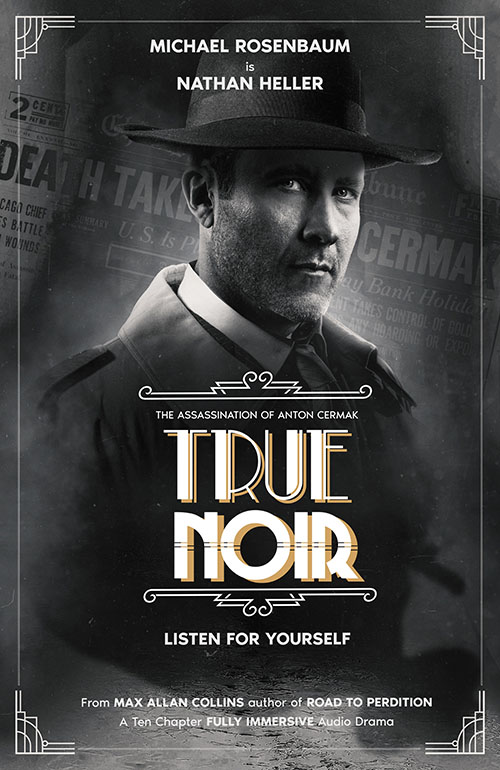
In the meantime, True Noir: The Assassination of Mayor Cermak is winding down – the last couple of the ten episodes will drop any moment now. Director Robert Meyer Burnett continues to do a great job.
If you order now, at least the first eight of ten episodes are available. Episode eight is, as Rob would say, “a banger.”
And this just in!
M.A.C.
